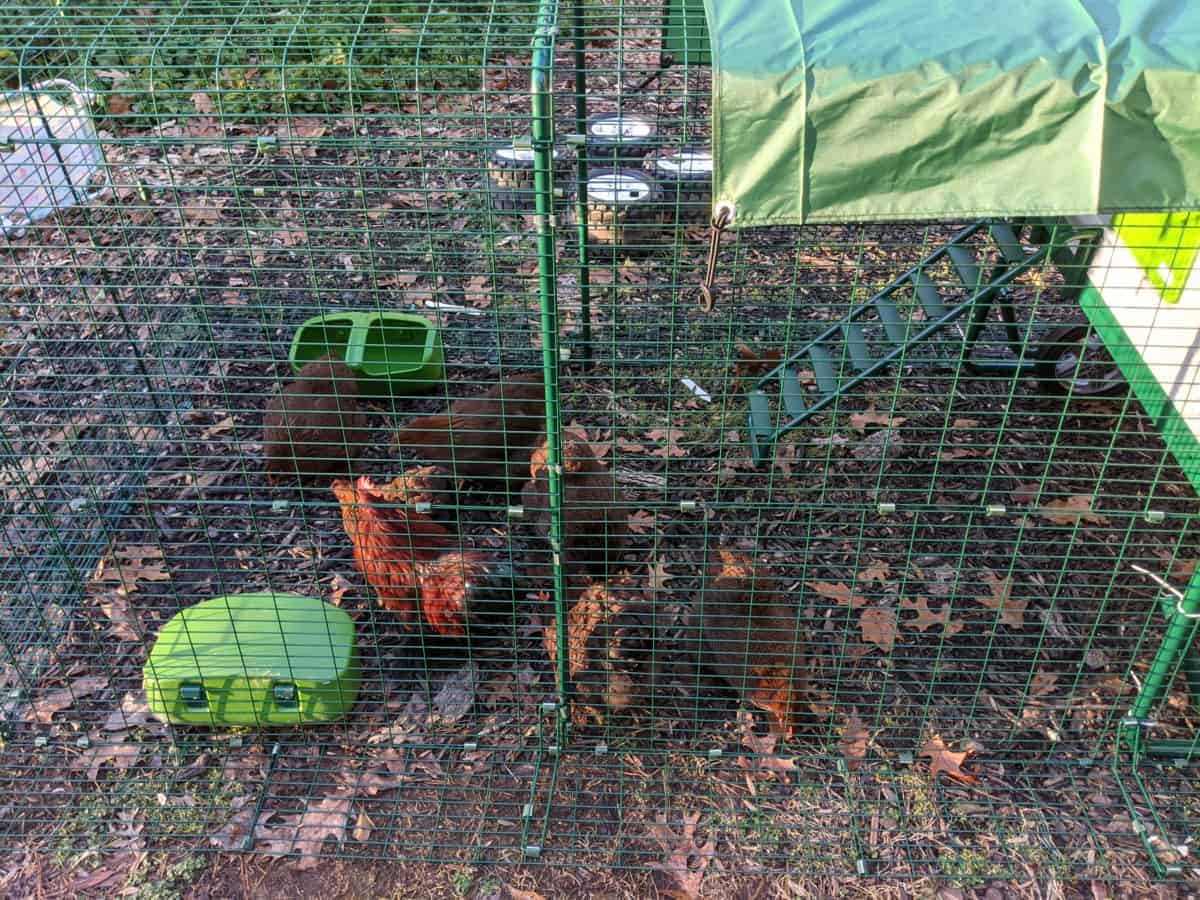Chicken coops come in a wide variety of designs and can be made from various materials. Some chicken owners go to great lengths to design elaborate structures for their chickens.
They decorate the chicken coops in carefully chosen styles and fashion the coop into a feature in the garden. Having built my own chicken coop in the past there are some essential parts that need to be included in all chicken coops.
There are three essential parts to a chicken coop. The hen house provides shelter from the elements and predators. The nesting boxes are situated inside the hen house and may be accessible from the outside of the coop. The chicken run allows chickens to have some safe time outside to scratch and forage.
This article will detail the various parts of the chicken coop. There will be information on important features of each part and consideration of the best materials to use to build them.
Essential Parts Of A Chicken Coop.
There are three primary areas that are seen in chicken coops:
- There should be an enclosed hen house that allows the chickens to be shut in safely to prevent predators from attacking the chickens at night.
- Inside the henhouse, there should be an area for nesting boxes.
- There should be a run attached to the hen house, allowing the chickens to have time outside but still protected from most predators.
- The coop should be off the ground with a ladder leading to the roosting area.
The Hen House
When building your hen house, you need to consider how many chickens you want to keep. Each chicken should have two to three square feet inside the hen house. The hen house can be built from wood or bricks. It needs to be a sturdy structure to protect the chickens from predators and severe weather.
It is essential to pay attention to ventilation and light in your hen house. This is particularly important if you live in an area where severe winter weather will necessitate the chickens being closed inside the hen house for long periods.
Finding a good chicken coop plan will help. A removable floor panel will make keeping your coop clean easier. Which you can see below in my chicken tractor from Omlet.
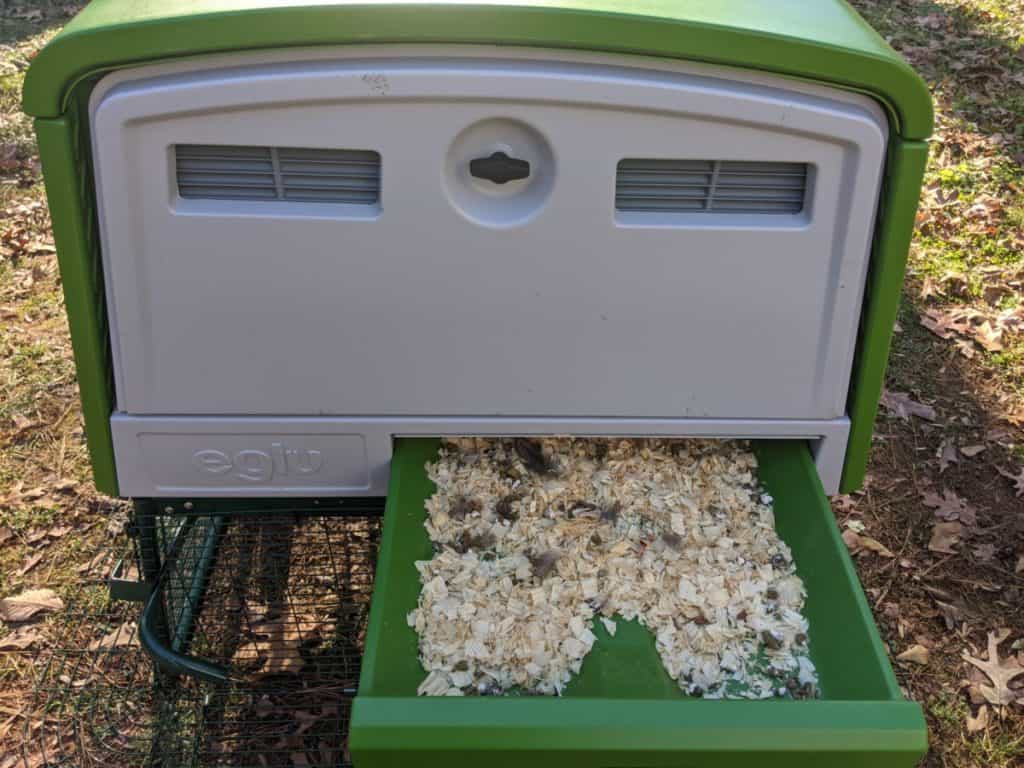
Ventilation And Light In The Hen House
Adequate ventilation and light can be naturally achieved through the use of windows.
If natural light is not possible or if you prefer a different system, mechanical ventilation or wind turbine ventilation can be used for larger amounts of hens in one space.
Mechanical ventilation uses an electric fan to keep the air circulating. Wind turbine ventilation uses spinning turbines built into the wall or mounted on the roof of the hen house. The turbines draw warm air out of the hen house and allow cool air to flow in through a vent.
Artificial light can be provided by light bulbs powered by mains electricity or solar panels. Ensure that the chickens do not have access to peck at electricity cables or spill water on the wires. This could result in a bad experience if there is a fire or a chicken is electrocuted.
If you just have a small flock of backyard chickens, artificial lighting and HVAC is not necessary in most cases.
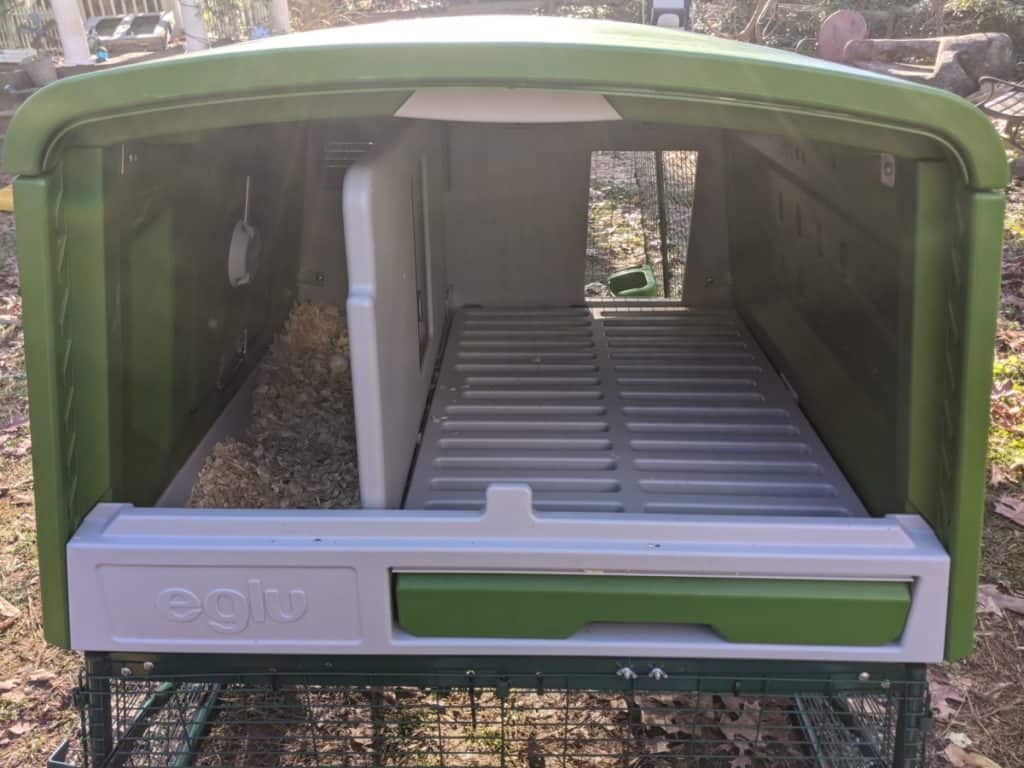
Roosts In The Hen House
Roosts are a system of stocks or poles that allow chickens to sleep perched above the ground at night. Chickens naturally prefer raised perches for sleeping. Roosting is a protective mechanism that prevents them from being attacked when they are sleeping.
The roosts can be constructed from tree branches or wooden dowels that are thick enough to carry the weight of the chickens. The chicken’s weight will vary according to the type of chickens you keep and will influence the material you choose for roost construction.
The roosts need to provide a minimum of five to ten inches of space per chicken. The roosting space dimensions may vary depending on the size of the chickens.
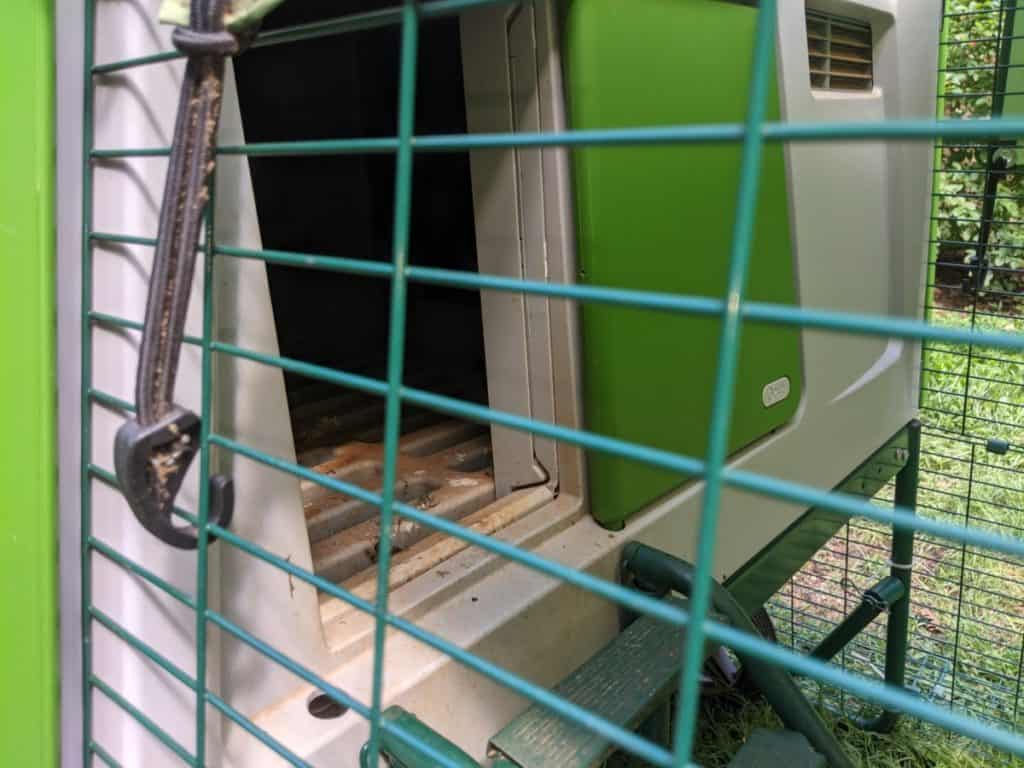
The Door On The Hen House
The door on the hen house must be robust to keep predators out and allow for warmth in bad weather. Some people prefer to use a gate, but this does not assist in keeping the chickens warm in freezing weather.
Some doors have a small hatch-type door(similar to a doggy door) to allow the door to stay closed in cold weather while letting the chickens access the run.
Nesting Boxes
Nesting boxes are located in the hen house. Some people prefer to have a semi-partition to divide the nesting box area from the general hen house. The nesting boxes provide a safe, quiet space for hens to lay eggs or brood their eggs to hatch chicks. Some hen houses have openings in the wall behind the nesting boxes so that eggs can be easily collected without entering the hen house.
Nesting boxes can be in a single row at ground level or can be tiered so that there are multiple stories of nesting boxes. If you allow your hens to hatch their chicks, then nesting boxes at ground level are preferable so that chicks do not fall out of the nest once they hatch.
How Many Nesting Boxes Do You Need?
The generally accepted rule is that there should be one nesting box for every three to four hens. Each nesting box should be one cubic foot in size to allow the hen to fit comfortably in the box.
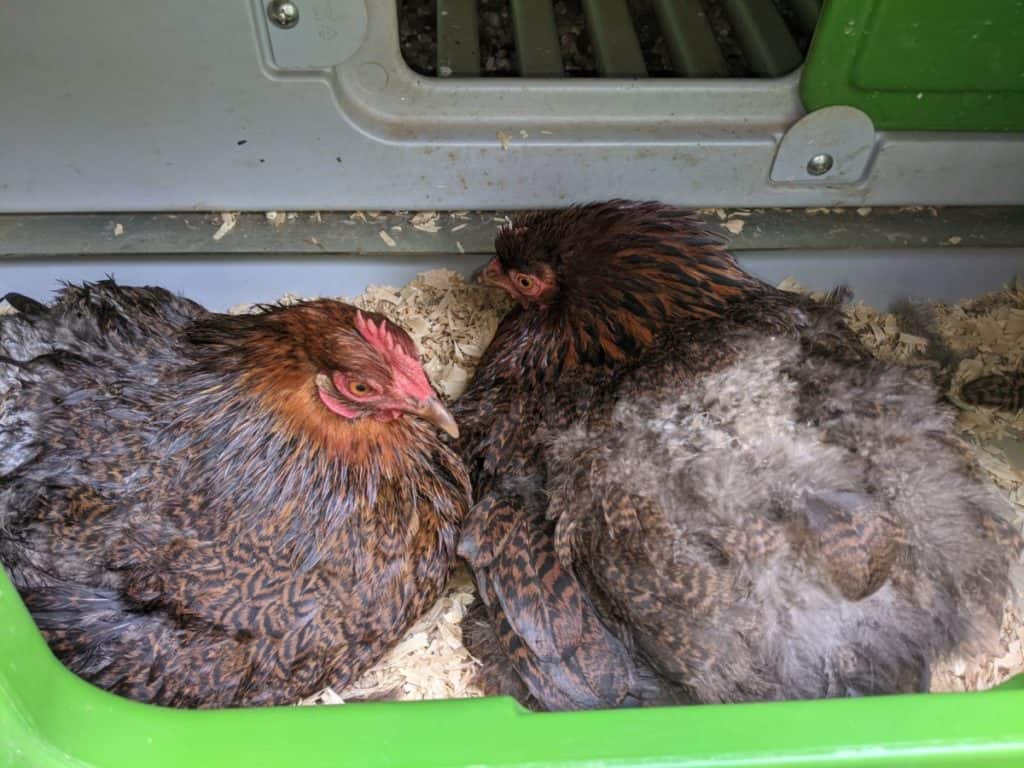
Building Nesting Boxes
Nesting boxes can be built into the structure of the hen house, or they can be loose and moveable. The moveable nesting boxes are often easier to clean and can easily be replaced if you need to decontaminate the hen house for some reason. Built-in nesting boxes are often sturdier than loose boxes.
If you have built-in nesting boxes, consider ways to make cleaning them as simple as possible. You can purchase nesting boxes at feed or farming stores, but they are easy to make from wood offcuts. Home-made nesting boxes are very much cheaper and can be made to fit the size of your chickens.
Materials For Chicken Nesting Boxes
Nesting boxes should be lined with soft bedding material that encourages the hen to settle down and feel comfortable in the box. Grass cuttings, straw, wood shavings, shredded paper, or sunflower seed husks can be used to line the box but I use pine wood shavings.
Always ensure the material you use to line the nest box is safe for use with chickens and has no toxic fumes.
The Chicken Run.
The chicken run is attached to the hen house. It provides an outside area for the chickens to forage in the sand, pecking for insects and taking dust baths. The run should provide eight to ten square feet of space for each chicken. Use a strong mesh or chicken wire to enclose the run on all four sides and the top. The fencing should be as tall as a person to allow easy access for cleaning and maintenance.
Hardware cloth can be used along the bottom edges of the fence to prevent snakes from accessing the run if snakes are a problem in your area. You can plant shrubs to provide natural shade.
Small three-sided structures outside in the run will allow chickens to rest in the shade or shelter from the wind. Small plentiful shelters in the run improve a chicken’s sense of well-being as they can hide from birds of prey in these shelters. Even if the run is fenced on the top, chickens will still detect birds of prey that try to enter, and it will be stressful for the chickens.
Chicken runs must be closed with a sturdy gate with a robust latch to prevent predators from gaining access to the run. Dogs and coyotes can be surprisingly successful in opening or breaking latches.
Some runs have a solid roof over the run, but this can become costly if you have a large run area.
Below you can see my current coop’s run.

What Are the Most Dangerous Predators?
Just about every predator out there likes to eat chickens: coyotes, fox, raccoons, opossums, hawks.
What Are the Important Things to Consider?
Whether you plan to construct a high-end, designer chicken coop or something basic, you’ll need to keep your birds safe from predators. You must give them enough room inside the coop.
How Much Room Do Chickens Need?
If they will graze outside, they’ll require less room in the coop (two to three square feet per bird) but if they’ll be cooped up all the time, you need to provide a lot more room per bird (three to four times the room).
How far should a chicken coop be from a house?
Keep your coop 50 to 100 feet or more from your house if you have the room. I once built my coop too close to my house and regretted it. I now have a chicken tractor which I prefer.
Chicken feed attracts rodents and you don’t want them trying to find a place in your house to live. Also if you have a lot of chickens and don’t clean the coop regularly it can begin to stink.
Conclusion
Chicken coops consist of three main areas – namely the henhouse, which includes the nesting boxes and the outside run. Chicken coops can be as elaborate or as simple as you want.
They can form a feature in the garden or just be a straightforward, functional structure to house the chickens. Chicken coops should always be well constructed with enough space for all the chickens.
If you are building your first coop, its better to make it bigger than just having enough room for your current chickens. Chickens have a way of multiplying, and chicken fanciers are often inveterate collectors of chickens.
Many chicken keepers speak about ‘chicken maths’ to indicate their inability to keep their chicken numbers down. So planning for more chickens than you currently have, would be expedient.

